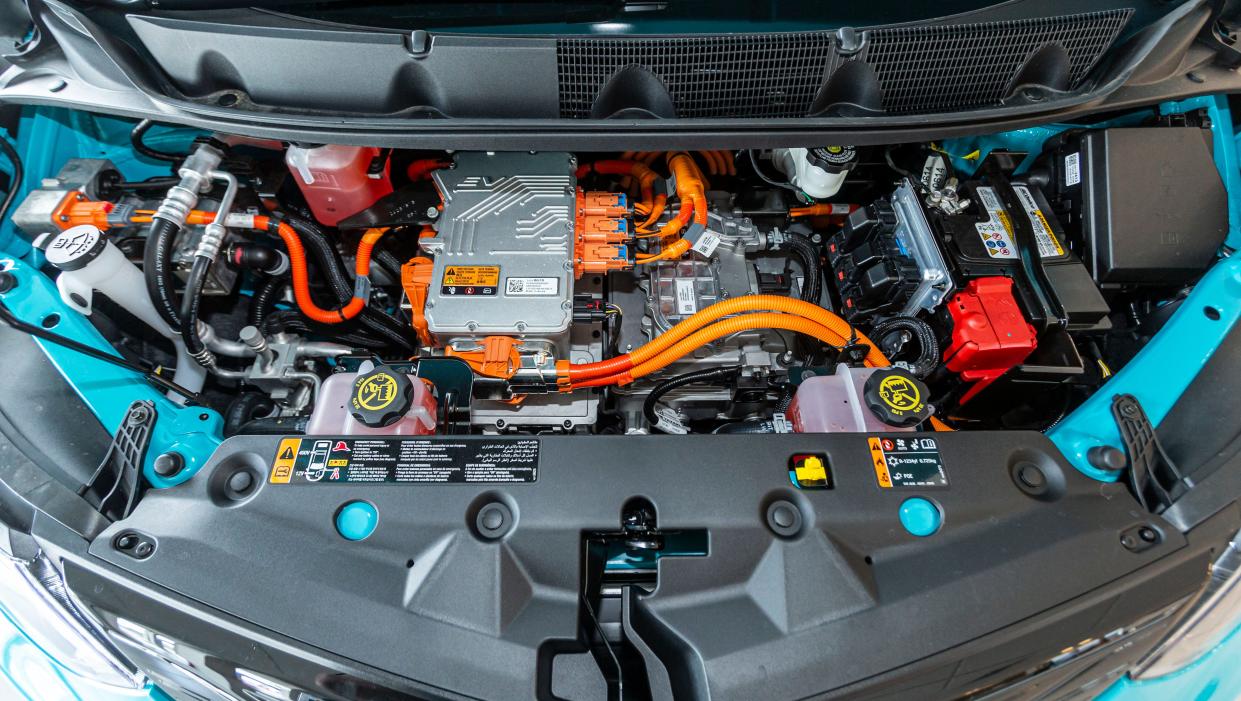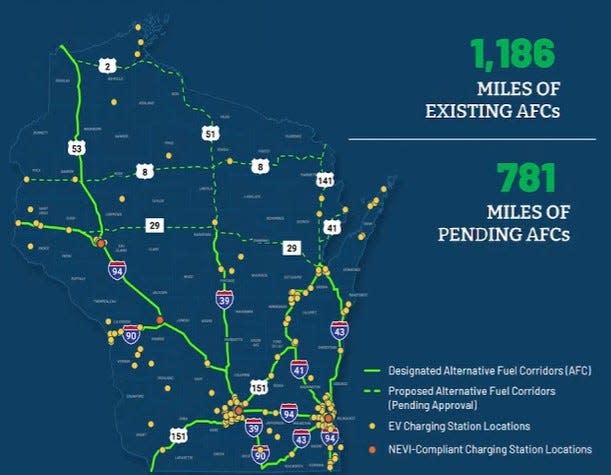As federal programs lay groundwork for electric vehicles, WisDOT is determining state's role

As electric vehicles gain popularity in Wisconsin, state officials are figuring out their role in advancing the groundwork needed to make them commonplace.
The Department of Transportation's Wisconsin Electrification Initiative is studying how these vehicles could change roadways. The department held webinars June 21 and 22 to update the public on Wisconsin's role in the National Electric Vehicle Infrastructure (NEVI) Program.
The $5 billion project would expand the country's electric vehicle supply equipment via a national highway network and increased infrastructure to support alternative fuel corridors.
Caleb Vander Veale, project manager of the Plan Development Process and part of the department's Division of Budget Strategic Initiatives, walked the public through a presentation of what the NEVI Program means for Wisconsin.
"WisDOT's goal is to ... fully understand the state's appropriate role in electric vehicles (and) define a comprehensive strategy and action plan to facilitate electrification of Wisconsin's transportation system," he said.
What is NEVI?
NEVI is a result of President Joe Biden's Bipartisan Infrastructure Law, which delegated $7.5 billion to build a national network of electric vehicle charging stations.
NEVI identifies how those funds will be spent and lays out a charging system along designated corridors.
The program has fairly strict requirements, Vande Veale said, including that chargers must be less than one travel mile off an exit or interstate.
"It's fairly strict criteria to what types of charging stations we can fund and where they can be located," he said.
The stations have to have a minimum of four ports and charge a minimum of 150 kilowatts simultaneously.
The overall goals of the program are to create public- and private-sector partnerships to install infrastructure, with a national highway network of 500,000 electric vehicle supply equipment by 2030.
This will also reduce greenhouse gas emissions, helping the U.S. become net zero by 2050 and leading the efforts for global electric transportation.
NEVI is the main program funded, but there are two other discretionary grant programs, at $1.25 billion each, that would help fund projects focused specifically on publicly accessible charging stations and projects that prioritize expanding access to rural and low- to moderate-income neighborhoods.
The department has to submit its NEVI program plans by Aug. 1.
What's the plan for Wisconsin?
Wisconsin was allocated $78.65 million over five years, with $11.64 million expected in the first year. The remaining years will be around $15 million, Vande Veale said.

Plans call for nearly 2,000 miles of alternative fuel corridors, which are roadways that have infrastructure or plans for infrastructure that support alternative fuel options, such as electric, liquefied petroleum gas, hydrogen or compressed national gas.
There are currently 1,186 miles of these corridors, mainly in southeastern Wisconsin, including Interstates 94, 90, 43, 41, 535 and U.S. highways 53 and 51.
Proposed projects include: parts of U.S. highways 51, 2 and 141; State 29; and all of U.S. highways 8 and 41.
"Part of our decision in designating those routes is to have a complete system of (alternative fuel corridors) across the state ... not just the southern two-thirds," Vande Veale said. Like, "Highway 29 between Green Bay and Eau Claire — that's a critical connection."
The department is working in partnership with internal and external stakeholders from the public and private sector, including planning organizations, tribal governments, labor and workforce organizations, utilities, vendors and equity-based organizations.
Staff is also coordinating on a regional and national level with groups such as Regional EV Midwest, the Lake Michigan Circuit and American Association of State Highway Transportation.
MORE:Electric vehicles are gaining traction among Wisconsin drivers and businesses that provide support
What's the status of electric vehicles in Wisconsin?
Vande Veale shared that there is a small electric vehicle fleet here that has grown "fairly significantly" in the last four years.
In 2018, drivers registered 2,792 electric vehicles in Wisconsin. That number more than doubled by 2020 and, as of April, there are 7,590 registered in the state.
The department began working to understand electric vehicles shortly before the NEVI program, by about a year, he said.
There are currently 306 charging station locations that are accessible to the public, 164 within one mile of an corridor exit or intersection and four NEVI-compliant charging station locations. There are 550 Tesla-only charging station locations in the state.
One of the biggest concerns Vande Veale said they've heard is "range anxiety," or the worry that folks will be driving on the highway and run out of power before making it to another charging location.
What's next?
After the department submits plans for the federal program, they'll continue working with stakeholders to evaluate partnerships and determine potential locations, Vande Veale said.
"We're still building our expertise in the (electric vehicle) space and we will continue to do that," he said.
They'll also work to develop a grant structure that organizations can apply for, potentially through private sites and partners. The department does not intend to own or operate charging stations.
It will continue to monitor federal and state regulations and hold public discussions.
"We understand there's a lot of public interest and some areas of concern," he said. "Well continue those conversations as we learn the state's appropriate place."
Visit wisconsindot.gov and click on "Transportation electrification" under "Key department initiatives" to learn more.
Contact Katy Macek at kmacek@thenorthwestern.com or 920-426-6658. Follow her on Twitter @KatherineMacek.
This article originally appeared on Oshkosh Northwestern: Wisconsin Department of Transportation working toward electric vehicles

